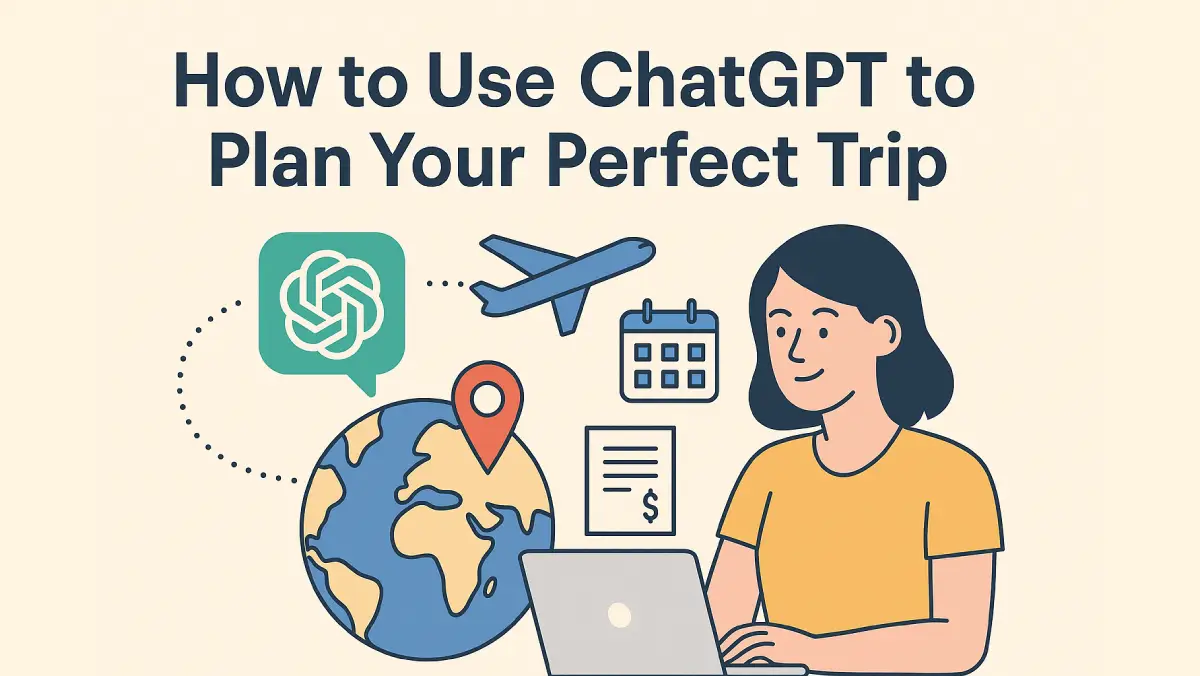How to Use Chatgpt to Plan Your Perfect Trip
Planning a trip can feel overwhelming, especially when juggling a demanding job in oil and gas or other time-intensive sectors. Coordinating schedules, researching destinations, booking flights, and managing itineraries each add their own layer of complexity. Even short breaks can become a logistical nightmare. That’s where using an AI trip planner like ChatGPT becomes a game changer.
In addition, instead of spending hours sifting through reviews and travel forums, ChatGPT simplifies the process by offering instant, well-organized suggestions tailored to your preferences. In this guide, we’ll walk through how to use ChatGPT as your go-to trip planner and why it’s becoming a reliable AI travel planner for busy professionals.
Why Use ChatGPT for Travel Planning?
Here’s how ChatGPT saves time and effort while improving your travel experience:
- Quick recommendations for flights, hotels, and local experiences
- Customized itineraries based on interests, dates, and budget
- Real-time guidance for destination research and logistics
- Integration with other tools like Google Maps and booking sites
Whether you’re arranging a corporate retreat, a family vacation, or a solo escape during your rotation break, AI tools like ChatGPT, and Deepseek.ai offer convenience without complexity.
Step-by-Step: How to Use ChatGPT as a Trip Planner
1. Start with Your Preferences
Before using ChatGPT, make a quick note of your preferences:
- Travel dates
- Number of travelers
- Type of trip (relaxation, adventure, business, family, etc.)
- Budget Range
- Preferred travel pace (slow or packed schedule)
Once that’s done, you can ask ChatGPT something like:
“Plan a 5-day trip to Colorado for two adults under $1,500 including hiking spots, local food, and budget-friendly hotels.”
You’ll receive a draft itinerary in seconds.
2. Fine-Tune Your Itinerary
The first draft you receive is a great starting point. But like any human trip planner, you’ll want to tweak the details. Try asking follow-up questions:
- “Can you suggest local restaurants near Glenwood Springs?”
- “What are the best sunrise spots for photographers in Colorado?”
The responses are conversational, so it’s like talking to a friend who knows a lot about travel.
You can also ask for hidden places to visit that are not overcrowded with tourists. ChatGPT often draws in local insights that typical travel blogs overlook, providing an opportunity to explore scenic, off-the-beaten-path locations that align with your travel style.
3. Use AI Travel Planner for Budgeting
One of the artificial intelligence use cases in AI trip planners is generating cost estimates. Simply ask:
“Break down the cost of this 5-day Colorado itinerary.”
You’ll get:
| Expense Type | Estimated Cost |
| Flights | $300 |
| Accommodation | $450 |
| Food & Dining | $200 |
| Activities & Entry Fees | $150 |
| Transportation (rental/gas) | $150 |
| Total | $1,250 |
This makes it easier to stay within budget and justify your travel decisions—especially useful for managers needing quick approvals.
4. Planning Around Rotations or Tight Schedules
For oil and gas professionals working onshore or offshore rotations, planning trips around leave days can be tricky. ChatGPT helps by:
- Finding optimal travel dates based on your shift schedule
- Suggesting nearby getaways for short breaks
- Recommending relaxing destinations to recharge before heading back
Unique Use Cases of AI Trip Planner
Moreover, AI tools are becoming more capable every day. The artificial intelligence use cases in AI trip planner go beyond basic itinerary creation:
- Visa Information: Ask about visa requirements for any country.
- Weather Updates: Get average temperatures or seasonal data.
- Local Events: Find out about festivals or exhibitions happening during your visit.
- Packing Checklists: Generate personalized packing lists based on destination and activities.
These features save hours of online research.
Tips for Getting the Most Out of ChatGPT as a Trip Planner
To maximize ChatGPT’s usefulness:
- Be specific in your prompts.
- Ask follow-up questions to refine recommendations.
- Cross-verify major bookings (flights and hotels) with real-time providers.
- Use numbered lists for itinerary planning to keep things structured.
Sample Prompt Ideas
Try these prompts for more tailored responses:
- “Plan a beach holiday for 4 adults near Houston, including one day for fishing.”
- “What are some peaceful vacation spots for a 3-day trip from Midland, TX?”
- “Give me a list of energy industry conferences I can attend while traveling to Dubai.”
These examples show how travel can be blended with work trips or relaxation, depending on your goals.
Stats: Why More Professionals Are Using AI Trip Planners
According to a 2025 report by Skift:
- 62% of business travelers now use AI-based tools to plan their trips.
- The average planning time is reduced by 40% using platforms like ChatGPT.
- 87% of users say AI helped them discover destinations they wouldn’t have found otherwise.
This shows the increasing trust and efficiency tied to AI travel planners.
Final Thoughts
Using ChatGPT as your trip planner saves time and makes travel more enjoyable. It’s especially helpful for professionals with demanding schedules.
Here’s why it works:
-
Reduces time spent on research and planning
-
Suggests destinations that fit your schedule
-
Helps organize budgets and itineraries quickly
The use cases of artificial intelligence in the AI trip planner are expanding every day—from generating quick itineraries to helping professionals plan around tight schedules. Instead of relying on outdated travel blogs or bulky guidebooks, this modern solution brings everything together in one place.
Try it the next time you plan a trip—you’ll be surprised how much smoother it goes.
editor's pick
news via inbox
Nulla turp dis cursus. Integer liberos euismod pretium faucibua



